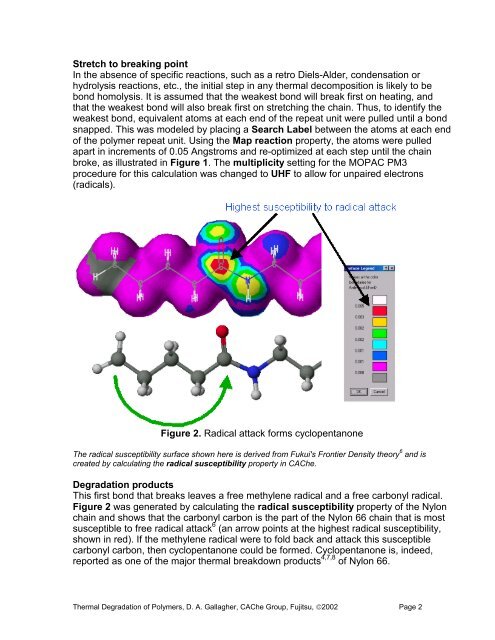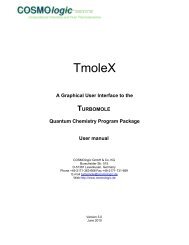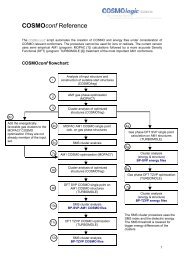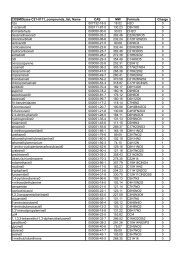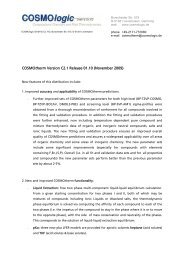New Insights into the Thermal Degradation of ... - CAChe Research
New Insights into the Thermal Degradation of ... - CAChe Research
New Insights into the Thermal Degradation of ... - CAChe Research
You also want an ePaper? Increase the reach of your titles
YUMPU automatically turns print PDFs into web optimized ePapers that Google loves.
Stretch to breaking pointIn <strong>the</strong> absence <strong>of</strong> specific reactions, such as a retro Diels-Alder, condensation orhydrolysis reactions, etc., <strong>the</strong> initial step in any <strong>the</strong>rmal decomposition is likely to bebond homolysis. It is assumed that <strong>the</strong> weakest bond will break first on heating, andthat <strong>the</strong> weakest bond will also break first on stretching <strong>the</strong> chain. Thus, to identify <strong>the</strong>weakest bond, equivalent atoms at each end <strong>of</strong> <strong>the</strong> repeat unit were pulled until a bondsnapped. This was modeled by placing a Search Label between <strong>the</strong> atoms at each end<strong>of</strong> <strong>the</strong> polymer repeat unit. Using <strong>the</strong> Map reaction property, <strong>the</strong> atoms were pulledapart in increments <strong>of</strong> 0.05 Angstroms and re-optimized at each step until <strong>the</strong> chainbroke, as illustrated in Figure 1. The multiplicity setting for <strong>the</strong> MOPAC PM3procedure for this calculation was changed to UHF to allow for unpaired electrons(radicals).Figure 2. Radical attack forms cyclopentanoneThe radical susceptibility surface shown here is derived from Fukui's Frontier Density <strong>the</strong>ory 6 and iscreated by calculating <strong>the</strong> radical susceptibility property in <strong>CAChe</strong>.<strong>Degradation</strong> productsThis first bond that breaks leaves a free methylene radical and a free carbonyl radical.Figure 2 was generated by calculating <strong>the</strong> radical susceptibility property <strong>of</strong> <strong>the</strong> Nylonchain and shows that <strong>the</strong> carbonyl carbon is <strong>the</strong> part <strong>of</strong> <strong>the</strong> Nylon 66 chain that is mostsusceptible to free radical attack 6 (an arrow points at <strong>the</strong> highest radical susceptibility,shown in red). If <strong>the</strong> methylene radical were to fold back and attack this susceptiblecarbonyl carbon, <strong>the</strong>n cyclopentanone could be formed. Cyclopentanone is, indeed,reported as one <strong>of</strong> <strong>the</strong> major <strong>the</strong>rmal breakdown products 4,7,8 <strong>of</strong> Nylon 66.<strong>Thermal</strong> <strong>Degradation</strong> <strong>of</strong> Polymers, D. A. Gallagher, <strong>CAChe</strong> Group, Fujitsu, ©2002 Page 2


